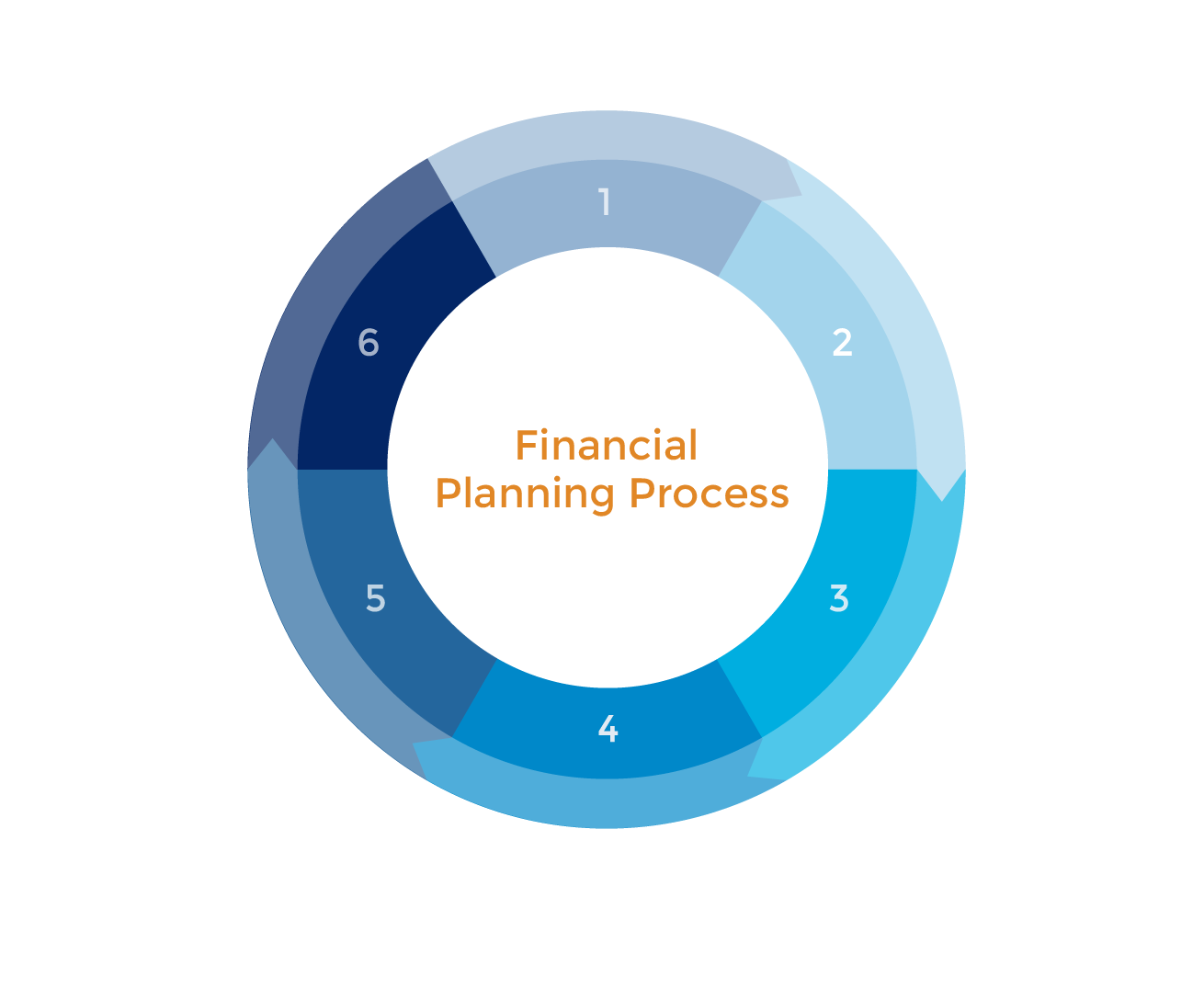What is Financial Planning ?
Financial Planning is the process of meeting your life goals through the proper management of your finances. Life goals can include buying a house, saving for your child's higher education or planning for retirement. The Financial Planning Process consists of six steps that help you take a 'big picture' look at where you are currently. Using these six steps, you can work out where you are now, what you may need in the future and what you must do to reach your goals. The process involves gathering relevant financial information, setting life goals, examining your current financial status and coming up with a strategy or plan for how you can meet your goals given your current situation and future plans.
Financial Planning in Six Steps
Financial Planning Process consist of six steps that financial planning professionals use to consider all aspects of a client’s financial situation when formulating financial planning strategies and making recommendations. Scroll down to learn about each step in the process.

The steps in the financial planning process are as follows :
- Stablish and define the relationship with the client.
The financial planning professional informs the client about the financial planning process, the services the financial planning professional offers, and the financial planning professional’s competencies and experience. The financial planning professional and the client determine whether the services offered by the financial planning professional and his or her competencies meet the needs of the client. The financial planning professional considers his or her skills, knowledge and experience in providing the services requested or likely to be required by the client. The financial planning professional determines if he or she has, and discloses, any conflict(s) of interest. The financial planning professional and the client agree on the services to be provided. The financial planning professional describes, in writing, the scope of the engagement before any financial planning is provided, including details about: the responsibilities of each party (including third parties); the terms of the engagement; and compensation and conflict(s) of interest of the financial planning professional. The scope of the engagement is set out in writing in a formal document signed by both parties or formally accepted by the client and includes a process for terminating the engagement.
- Collect the client’s information.
The financial planning professional and the client identify the client’s personal and financial objectives, needs and priorities that are relevant to the scope of the engagement before making and/or implementing any recommendations. The financial planning professional collects sufficient quantitative and qualitative information and documents about the client relevant to the scope of the engagement before making and/or implementing any recommendations.
- Analyze and assess the client’s financial status.
The financial planning professional analyzes the client’s information, subject to the scope of the engagement, to gain an understanding of the client’s financial situation. The financial planning professional assesses the strengths and weaknesses of the client’s current financial situation and compares them to the client’s objectives, needs and priorities.
- Develop the financial planning recommendations and present them to the client.
The financial planning professional considers one or more strategies relevant to the client’s current situation that could reasonably meet the client’s objectives, needs and priorities; develops the financial planning recommendations based on the selected strategies to reasonably meet the client’s confirmed objectives, needs and priorities; and presents the financial planning recommendations and the supporting rationale in a way that allows the client to make an informed decision.
- Implement the financial planning recommendations.
The financial planning professional and the client agree on implementation responsibilities that are consistent with the scope of the engagement, the client’s acceptance of the financial planning recommendations, and the financial planning professional’s ability to implement the financial planning recommendations. Based on the scope of the engagement, the financial planning professional identifies and presents appropriate product(s) and service(s) that are consistent with the financial planning recommendations accepted by the client.
- Review the client’s situation.
The financial planning professional and client mutually define and agree on terms for reviewing and reevaluating the client’s situation, including goals, risk profile, lifestyle and other relevant changes. If conducting a review, the financial planning professional and the client review the client’s situation to assess progress toward achievement of the objectives of the financial planning recommendations, determine if the recommendations are still appropriate, and confirm any revisions mutually considered necessary.